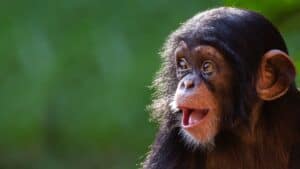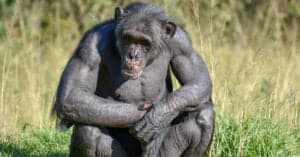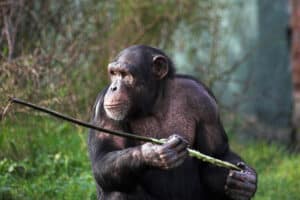Leafcutter ants and dung beetles are among the strongest animals on the planet, relative to their size. However, in terms of sheer strength, these little critters pale in comparison to larger mammals. Beyond size, a combination of factors determines an animal’s strength. Primates have the distinct advantage of opposable thumbs and the ability to stand upright. These two characteristics allow primates to move and manipulate objects with ease. Muscle mass and agility coupled with efficient energy conversion also affects strength. Bite force is another metric to consider. So, how strong are orangutans? Orangutans are strong, powerful animals. Their canine teeth are enormous, and their bite force is estimated to be 500 to 800 pounds per square inch (psi). Continue reading to discover more about orangutans and how their strength compares to humans and other animals.
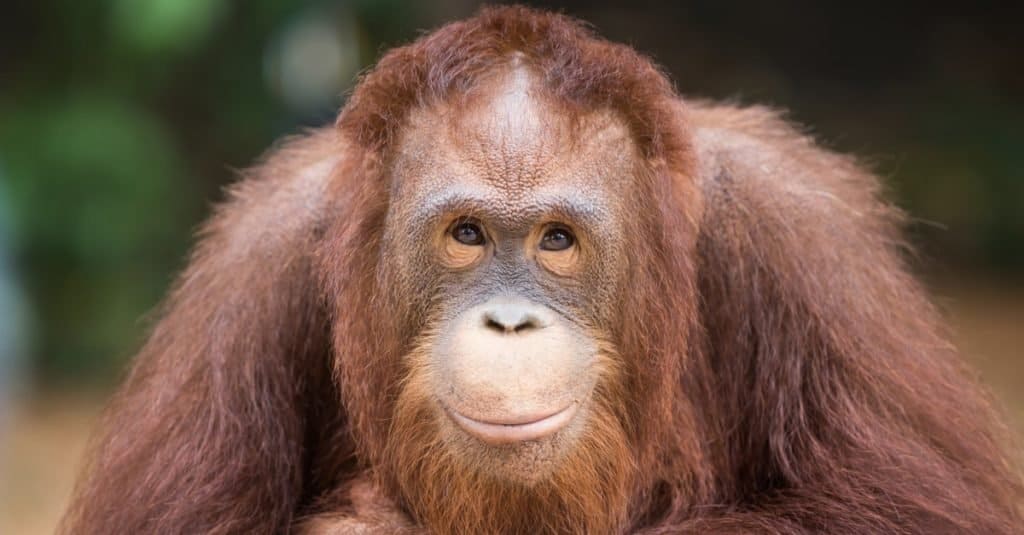
Orangutans are strong animals. Their canine teeth are enormous, and their bite force is 500 to 800 psi.
©Everything I Do/Shutterstock.com
How Strong Are Orangutans Compared to Humans?
Orangutans and humans have a remarkable degree of kinship. Research suggests that humans share 97% of their DNA with orangutans. As fellow members of the great ape family, their similarities are unmistakable. Orangutans are large, intelligent primates native to the rainforests of Borneo and Sumatra, islands in Southeast Asia. They are one of the three remaining species of great apes, along with gorillas and chimpanzees. Orangutans are graceful and agile and spend most of their lives in the trees. Humans are found around the world in varying habitats. They are bipedal and spend most of their time on land. Both orangutans and humans possess highly developed cognitive skills and live in complex social structures.
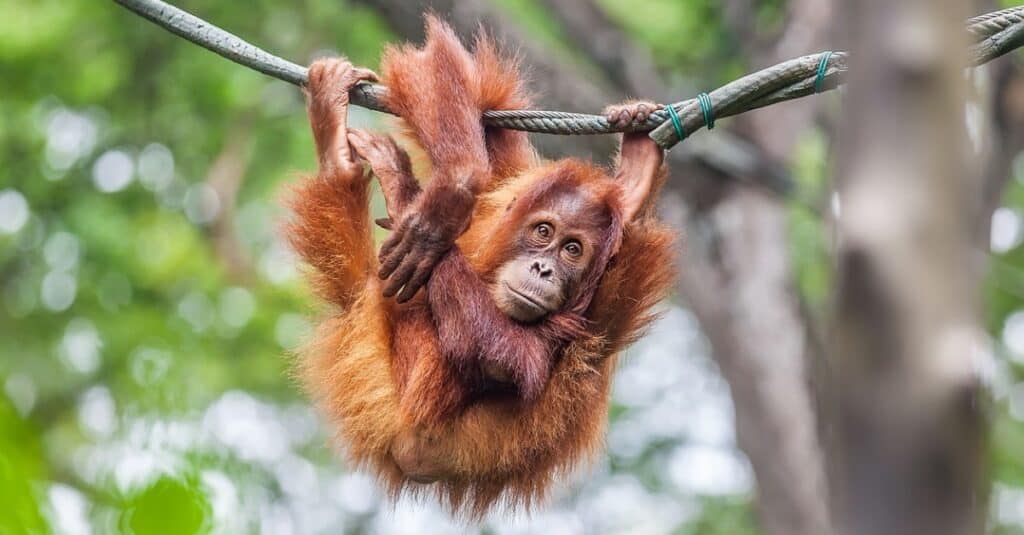
Orangutans are graceful and agile and spend most of their lives in the trees.
©iStock.com/molishka1988
Body Size and Weight
Orangutans and humans are very similar in size. As with humans, adult male orangutans are larger and heavier than females. Males weigh between 150 and 285 pounds (68 and 129 kg). Human adult males in the U.S. weigh an average of 197 pounds (89 kg). Female adult orangutans weigh 66 to 90 pounds (30 to 40 kg). The average weight for adult females in the U.S. is approximately 170 pounds (77 kg).
Adult male orangutans typically stand 4.0-4.3 feet (1.2-1.3 m) tall. Human adult men tend to be taller, with an average height of 5 feet 9 inches to 5 feet 10 inches (1.75 to 1.78 m).
Female orangutans are smaller than males, with average heights ranging from 3.3 to 3.75 (1.0 to 1.1 m). The average height of adult females in the U.S. is 5 feet 4 inches to 5 feet 5 inches (1.63 to 1.65 m).
Pound per pound and inch by inch, orangutans are stronger than their human cousins. And though orangutans are a conflict-avoidant, peaceful lot, if a human were to threaten one or attempt to usurp its territory, the orangutan would have the advantage in a match-up of hand-to-hand combat. They are also capable of delivering a nasty bite.
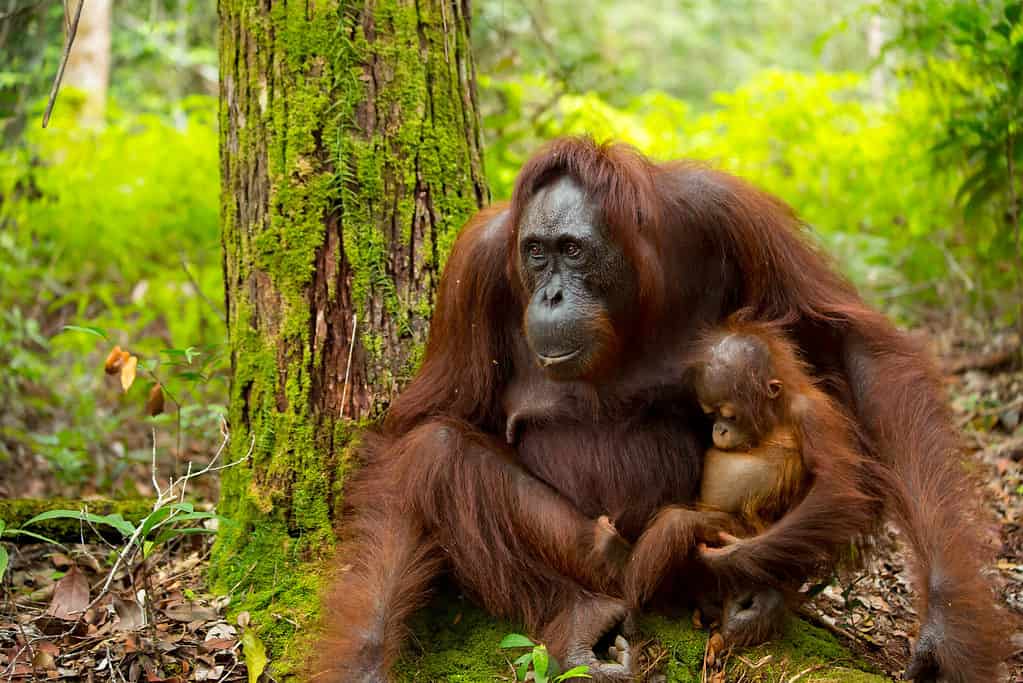
Female orangutans are smaller than males, with average heights ranging from 3.3 to 3.75 (1.0 to 1.1 m).
©Katesalin Pagkaihang/Shutterstock.com
Mouth Size and Bite Force
Orangutans generally have a wider and more protruding mouth than humans. The size and structure of an orangutan’s mouth and teeth reflect adaptations to their specific diet and lifestyle. Orangutans are fruitavores. This means that their diet consists principally of fruit. Orangutans have large, strong canines which are used for breaking open tough fruit or nuts. Humans, in contrast, have smaller, less prominent canines. Human teeth are adapted to a more generalized diet.
Orangutans have strong jaws that are well-suited for powerful biting and chewing. Human jaws are adapted to a more diverse diet, including both plant and animal products. While human jaws are capable of biting and chewing a variety of foods, they are not able to consume tough plant materials like those of orangutans. Research suggests that the bite force of an adult male orangutan is within the range of 500 to 800 pounds per square inch (psi) (3.4 to 5.5 megapascal). The average bite force of a human adult can vary, but it’s commonly reported to be between 150 to 200 psi (1-1.37 mp).
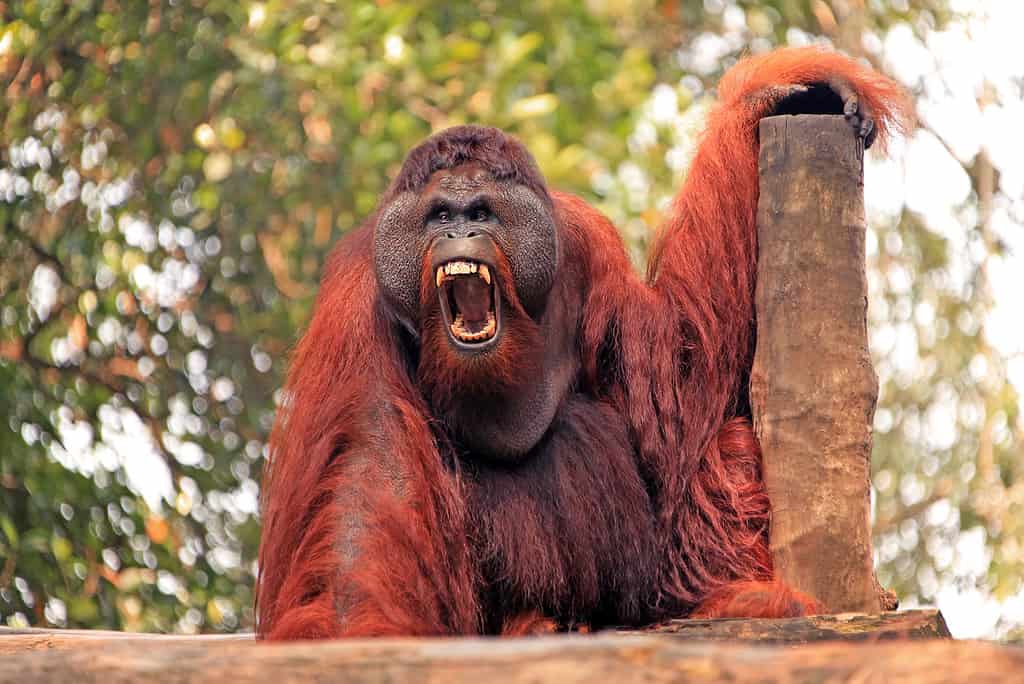
Orangutans have large, strong canines which are used for breaking open tough fruit or nuts.
©Kiwisoul/Shutterstock.com
Brute Strength
In terms of physical strength, orangutans are among the strongest primates. Powerful arms make them formidable in their natural environment. However, various animals, especially larger mammals, and some reptiles are stronger in terms of sheer physical power. African elephants have incredible strength. Their large size, powerful muscles, and ability to carry heavy loads make them one of the strongest land animals. Rhinoceroses are massive herbivores with thick, sturdy bodies. Their strength is evident in their ability to charge at high speeds and use their horns for defense.
Gorillas are another species of great ape, and while orangutans are strong, adult male gorillas have immense physical strength and are stronger pound-for-pound than orangutans. Saltwater crocodiles are the largest living reptiles and have powerful jaws. The saltwater crocodile’s bite force has been estimated at 3,700 psi (25.5 megapascal).
Hippopotamuses are deceptively strong and aggressive, particularly in water. They have powerful jaws and teeth. With a bite force of 1800 psi (12.4 mp), they are considered among the most dangerous animals in Africa. Grizzly bears are also impressively large mammals with powerful limbs and strong jaws. Their bite force of 975 psi (6.7mp) is strong enough to crush a bowling ball!
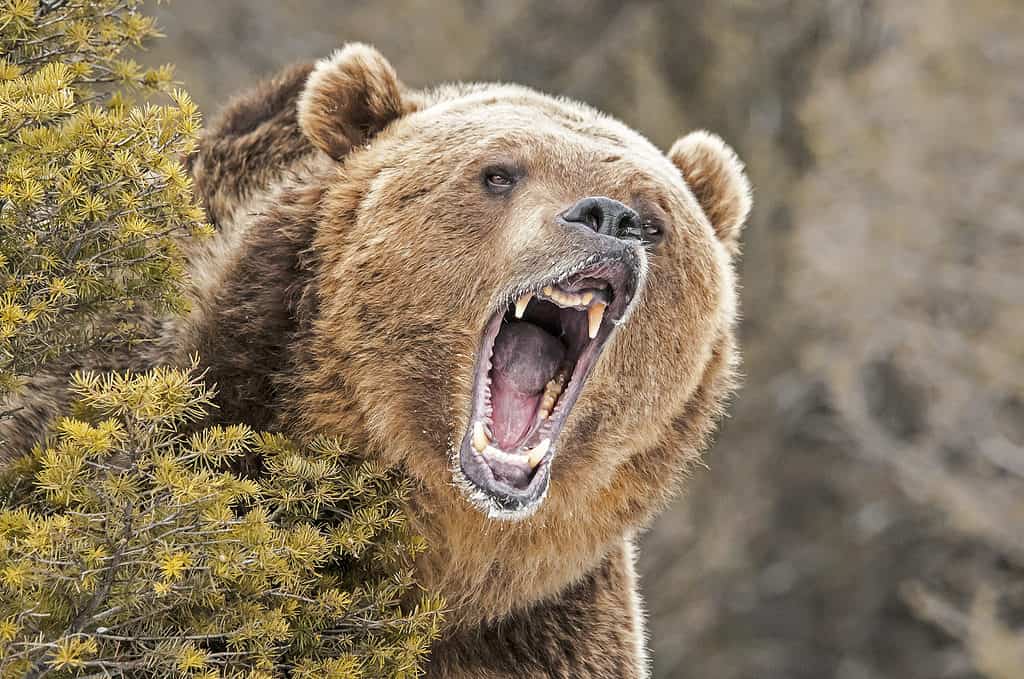
A grizzly bear’s bite force of 975 psi (6.7mp) is strong enough to crush a bowling ball!
©Scott E Read/Shutterstock.com
Animals Weaker than an Orangutan
Since orangutans are one of the strongest animals on Earth, it would be difficult to compile a list of every animal that is not as strong. Smaller primates, like lemurs, are significantly less strong than orangutans. Many herbivores, including deer and antelope, are not as physically powerful as orangutans. Carnivores like foxes, coyotes, and small wild cats, are generally weaker as well. Animals like rats, mice, rabbits, and many avian species are nowhere near as strong as orangutans. And, except for crocodiles, most reptiles are not as strong either.
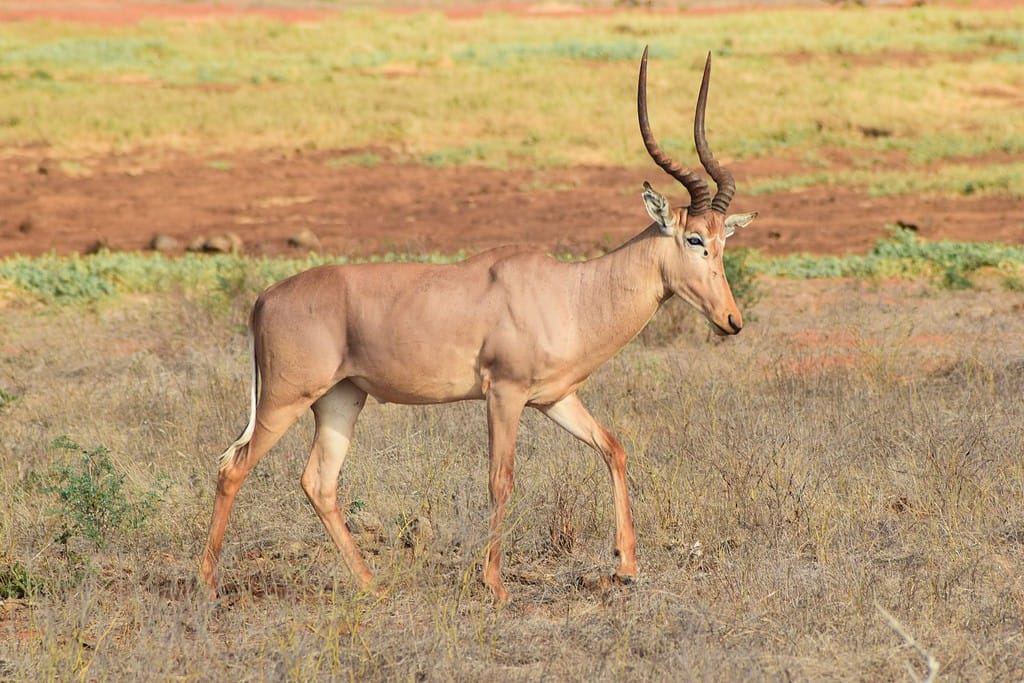
Many herbivores, including deer and antelope, are not as physically powerful as orangutans.
©OliverZeid/Shutterstock.com
How Strong are Orangutans Compared to Other Animals at a Glance
| Animal | Considered stronger than an Orangutan? |
|---|---|
| African Elephant | Yes |
| Rhinoceros | Yes |
| Gorilla | Yes |
| Saltwater Crocodile | Yes |
| Hippopotomus | Yes |
| Grizzly Bear | Yes |
| Orangutan | — |
| Antelope | No |
| Human | No |
| Coyote | No |
| Fox | No |
| Rabbit | No |
| Crow | No |
The photo featured at the top of this post is © Nagel Photography/Shutterstock.com
Thank you for reading! Have some feedback for us? Contact the AZ Animals editorial team.




